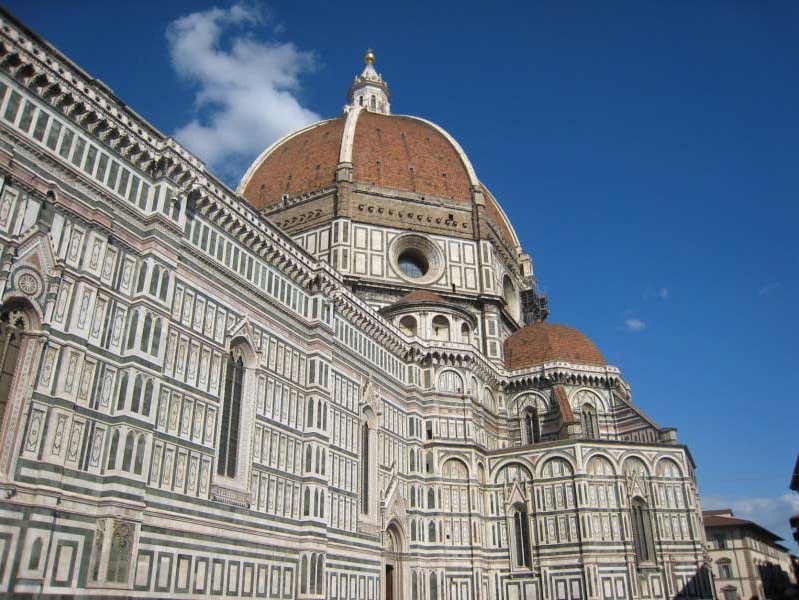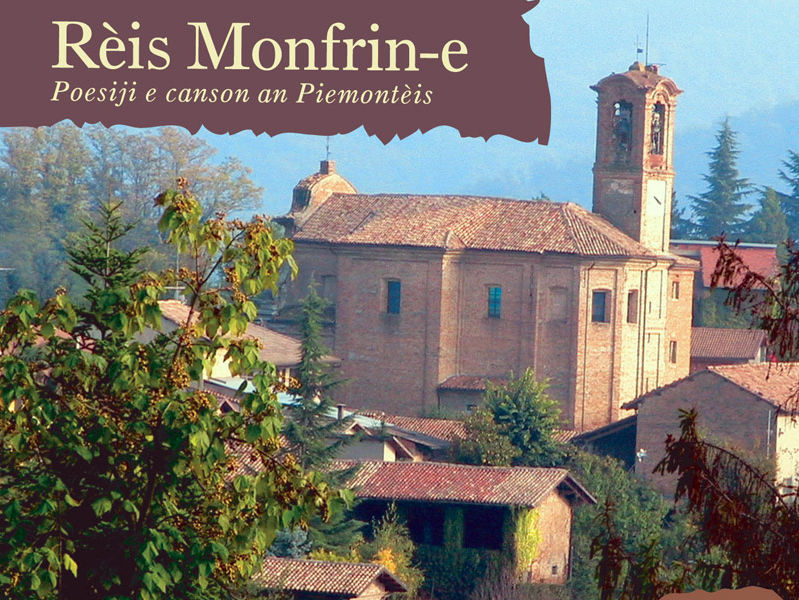Editor's Note: Former Milwaukee Mile Chairman Craig Stoehr is an avid traveler who regularly visits exotic lands and shares his adventures with OnMilwaukee.com readers. Stoehr rejoined top global law firm Latham & Watkins in June 2008. Now working in Doha, Qatar and Dubai, United Arab Emirates, he continues to inform OnMilwaukee.com readers about worthwhile international travel destinations. During this installment, he visits Venice, Florence and Tuscany.
VENICE
Having last been to Italy in 2003, I decided it was time for a return trip to Venice, Florence and Tuscany to indulge my love for all things Italian. Venice is known as one of the world's most romantic cities, and late September is a great time for a visit, as the hordes of tourists have begun to diminish and the weather is quite pleasant.
Venice's Marco Polo Airport is small and easily navigable (you can take Delta from Milwaukee to Atlanta and connect to a non-stop flight to Venice). The best way to get into this historic archipelago of 118 islands and more than 150 canals set over a lagoon is by taking the seven-minute walk from the baggage claim area to the water taxi stand, where you can arrange for a private water taxi.
Though somewhat expensive, this is really the most splendid way to arrive in Venice -- you literally feel like you've stepped into a movie, and the fashionably dressed water taxi drivers jabbering on their cell phones the entire ride let you know that you are most certainly in Italy.
In Venice, we stayed at the Hotel Metropole (www.summithotels.com), which is right on the Grand Canal and conveniently located just a few minutes' walk from the famous Piazza San Marco. The essence of Venice can be captured in a day or two, and should be marked by visits to the Piazza San Marco (where the Doge's Palace, St. Mark's Basilica and Clocktower are worth seeing), the Rialto Bridge, the Accademia Bridge and the Ponte dei Sospiri (Bridge of Sighs).
If you are spending several days in Venice, a visit to the glass factories on the island of Murano, the beaches at Lido or the Peggy Guggenheim Museum may also be of interest.
Other popular activities in Venice include a gondola ride (of course), visiting Harry's Bar (www.cipriani.com) for a Bellini (a drink made with Prosecco sparkling wine and peach puree that was invented by Harry's Bar founder Giuseppe Cipriani and named after 15th century Venetian artist Giovanni Bellini), and sipping a coffee at the timeless Caffé Florian or Gran Caffé Quadri on the Piazza San Marco.
In addition, a great (and inexpensive) way to see Venice and experience its liveliness is to travel around on a vaporetto (a public water bus) -- it's interesting, if only to see the incredible amount of boat traffic and to be amazed at how accidents are averted.
TUSCANY
After Venice, we headed for Tuscany, with a brief stop in Bologna, the birthplace of spaghetti bolognese, tortellini and mortadella sausage -- not to be confused (nor compared) with Oscar Mayer baloney.
Although Bologna seemed to be a nice city, the stop was not necessarily worthwhile, and was marred by our only unpleasant experience of the trip -- a waiter at what seemed like a fantastic little enoteca (wine bar/small restaurant), with tables made out of wine casks with discarded wine bottle corks underneath the glass tops -- who completely ignored us and would not take our order. I guess he took us for the tourists we were.
Early that evening, we arrived in Tuscany at our hotel in Sinalunga, a small town near Siena. The hotel, Locanda dell'Amorosa, dates to the 14th century; the ancient stables have been converted into hotel rooms along with a restaurant and wine bar, and there is even a chapel on the grounds. And the entry is spectacular -- a long, uphill dirt road lined by towering cypress trees on both sides reminiscent of General Maximus' home in the film "Gladiator" (which was partly filmed in Tuscany). Moreover, the level of service matches the unsurpassed and picturesque setting.
On our first night, we dined in the hotel's restaurant and had a wonderful meal that included a main course of thinly sliced veal doused in olive oil, balsamic vinegar, salt and pepper.
On our first full day in Tuscany, we rose early to see a spectacular sunrise over the Tuscan hillside from our window. That was an absolutely invigorating start to the day. We then drove straight for Montepulciano, a wonderful medieval hilltop town where first we visited the Cathedral of Santa Maria Assunta, which was constructed between 1594 and 1680.
We then walked down the steep and winding cobblestone streets to the bottom entrance to the old city, stopping along the way to watch an automobile rally comprised of more than one hundred old cars that were making their way to the top.
Before departing, we entered Citta Sotterranea, a wine and cheese shop, where we received a tour of the wine cellars located beneath the ground floor, where they still make the well-known Vino Nobile di Montepulciano wine.
After a brief stop in Pienza, a quaint medieval town with a view of Monte Amiata, Tuscany's highest mountain, we continued on to Montalcino, another medieval hilltop town known for the Brunello di Montalcino wine produced in the surrounding countryside. After walking around the town, where a cycling race was taking place, we stopped for lunch at Vineria Le Pottazine, a small contemporary enoteca located off the main piazza.
After Montalcino, we made a quick stop in Siena, famous for its annual horse race, the Palio, where each July 2 and Aug. 16 jockeys race their horses around the Piazza del Campo, Siena's large central square lined with cafés, gelaterias, shops and apartments on one side, and the Palazzo Pubblico (the town hall dating to 1297) and associated Torre del Mangia (the bell tower dating to 1325) on the other.
That evening, we dined in the neighboring town of Guazzino at Il Fornacino, a restaurant recommended by the friendly front-desk clerk at Locanda dell'Amorosa. It was a great and inexpensive local dining experience, with the owners -- Luigi and Daniela -- treating us like old friends, and serving us a wonderful Tuscan specialty, grilled beef Chianino (from the Chianina breed of cattle), along with a few too many glasses of Italian sweet wine after dinner.
On our last day in Tuscany, we began with a brief visit to Cortona, the village made famous in America by Frances Mayes in her memoir (subsequently made into a film), "Under the Tuscan Sun," where we walked down via Nazionale to Piazza Garibaldi, which afforded us a wonderful vista of the Tuscan countryside, including Lake Trasimeno, where Hannibal ambushed the Roman army centuries ago.
No trip to Tuscany -- well, perhaps for some -- would be complete without a stop at the fashion outlets, where you can purchase Italian designer clothing and accessories at deeply discounted prices. The Mall, in Leccio, houses numerous brand outlets and also has a surprisingly good restaurant.
Spacci in nearby Montevarchi houses Prada and its affiliated brands. Although the selection at both locations was great, after converting prices from euros into dollars, it was evident that the exchange rate had an extremely negative effect on our purchasing power, and we did more window-shopping than buying.
FLORENCE
Arriving that evening in Florence, we checked into our hotel in the historic city center, the Hotel Brunelleschi (www.summithotels.com), which is partly contained in a 6th century Byzantine tower. For dinner, the front desk clerk recommended Buca Mario, a restaurant first opened in 1886, and it did not disappoint. We had insalata caprese, an antipasto platter, spaghetti bolognese and Osso Buco (which fell off the bone and literally melted in my mouth like butter). The house Chianti, however, was a bit lackluster, but the service was excellent.
Afterward, we stopped for drinks first at Slowly Bar and then at Colle Bereto, which drew a crowd of what appeared to be fashion industry executives.
A trip to Florence should most definitely include taking in the Duomo, Uffizi Gallery, Michelangelo's David (at the Accademia), the Piazza della Signoria, the Piazza della Republicca and the Ponte Vecchio. Also worthwhile is shopping in the numerous boutiques found in Florence's historic city center (a UNESCO World Heritage site), and the open market on Via di Porta Rossa, where we purchased a leather jacket, a leather credit card holder, and two nice leather belts. Note that you are expected to bargain here, and coming at the end of the day (and in the off-season) can help you get the best prices.
After checking in to the Hotel Cavour, as the Brunelleschi was fully booked on our second night, we had the final dinner of our trip at Il Latini, a restaurant I first visited with my parents and some other close family friends from Milwaukee on a visit to Florence in September 2003.
That first meal five years ago was one of the most memorable of my life, and I have been dying to return ever since: never-ending courses and endless amounts of food -- antipasto platters, Tuscan bread soup so thick they put three different types in a bowl and none run together, pastas, a wide variety of grilled meats, dessert, and jugs and jugs of Chianti -- all for only €45 per person (only a €5 increase since 2003)!
At Il Latini, it's all family style, and if you can't fill the table yourself, you will share it with others. Our dining partners on this evening included a nice couple from Chicago on their first visit to Italy, and Giuseppe -- a local regular who really made the evening, as he was quite a character!
He first was dismissive of our selection of the house Chianti sitting on the table, and thus gave us some of his apparently better red wine. He was then keen to share his bistecca alla fiorentina (a T-bone steak grilled over a wood or charcoal fire, seasoned simply with salt, pepper and olive oil, and served relatively rare), but only if we ate it directly off his fork, which we did.
He also shared what he claimed to be his own personal dessert concoction -- vanilla ice cream with Grand Marnier (which I must say was delicious). Giuseppe certainly contributed to a memorable evening, and was a great example of what makes Italy so special.
After Il Latini, we capped off the evening with a walk to the Piazza della Repubblica, where we saw a scene from an Italian movie being filmed while we enjoyed a drink on the sidewalk café of the Hotel Bristol & Hevetia -- probably too expensive for a stay, but not for a drink to put a fitting end to a wonderful (albeit much too short) trip.




